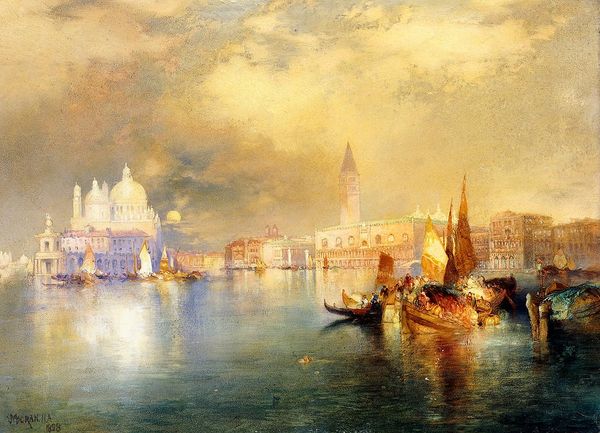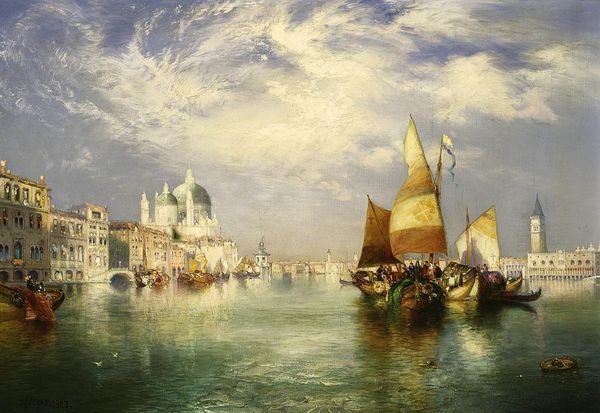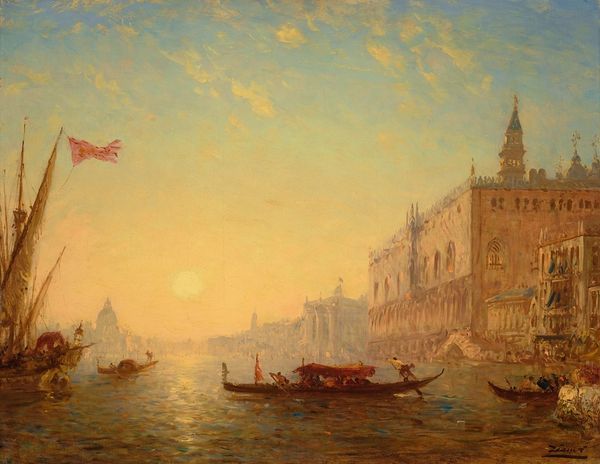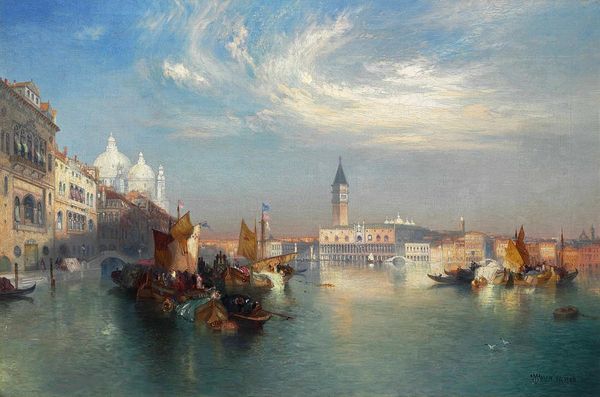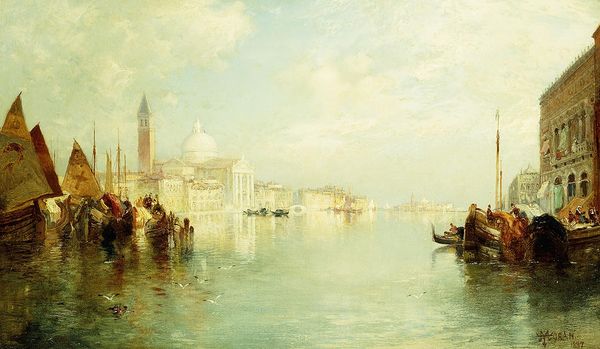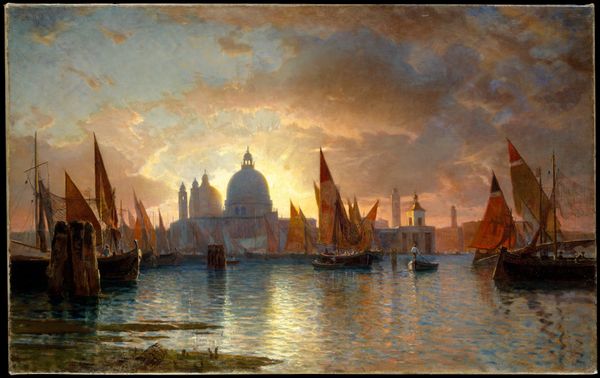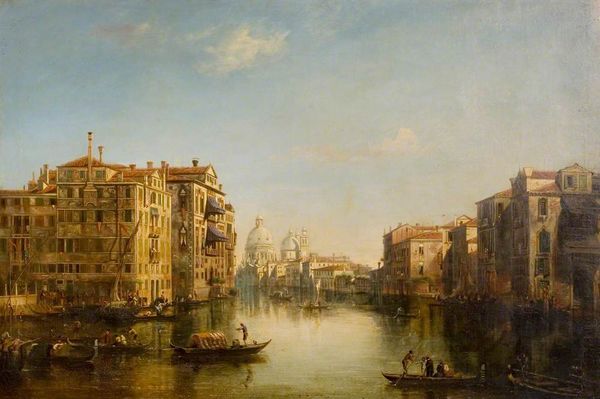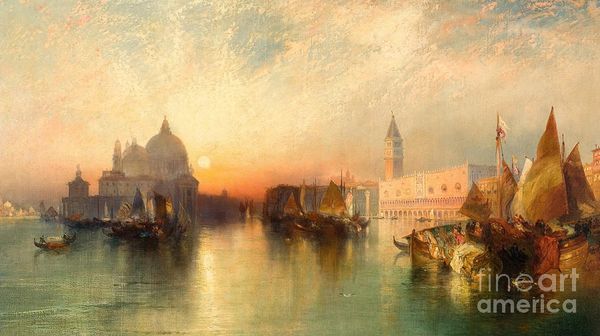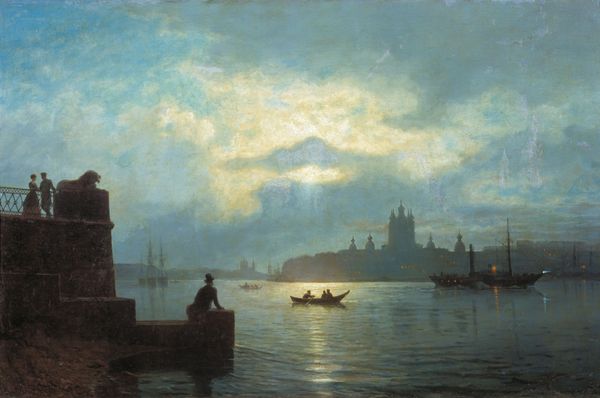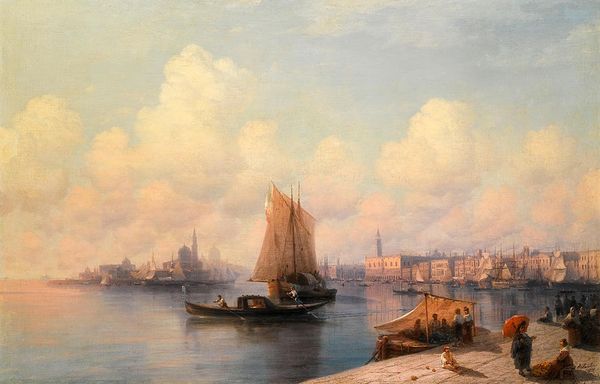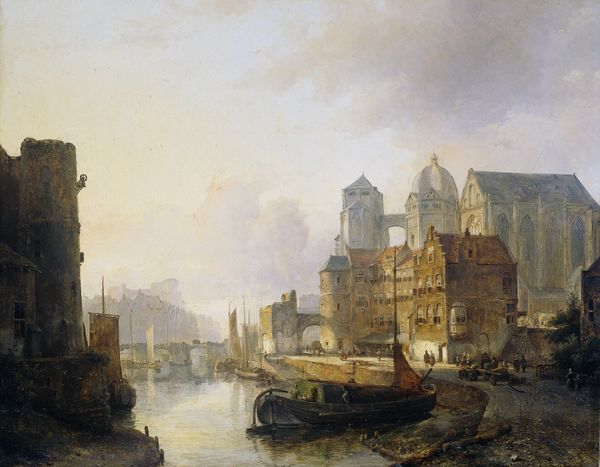
#
night
#
boat
#
sky
#
urban landscape
#
abstract painting
#
ship
#
impressionist painting style
#
vehicle
#
house
#
urban cityscape
#
possibly oil pastel
#
city scape
#
ocean
#
street graffiti
#
urban art
#
water
#
painting painterly
#
watercolor
#
sea
#
building
Copyright: Public domain
Curator: Alexey Bogolyubov painted "Venice at Night" in 1850. It offers a captivating, nocturnal view of the city. Editor: It’s moody. I see these glowing reflections on the water and a hushed sky that seems to blanket everything. I immediately want to know about the pigments used to capture this light. Curator: Bogolyubov’s artistic production occurred under the heavy patronage of the Russian Imperial family. Therefore, the view he represents reinforces the sublime grandeur expected by those powerful viewers, the hazy atmosphere, and grand architectural forms. Editor: You see grandeur, I see materiality at work! The brushstrokes give a shimmer to the water's surface that’s almost tangible. It’s not just about showing Venice but making you *feel* the dampness, the density of the night air on the canal. What do we know of the techniques Bogolyubov employed; was it oil? Curator: Indeed, it is believed he was an oil painter with an Impressionistic style, one greatly inspired by the era’s focus on capturing atmosphere. It certainly served a socio-political function, associating Russia with this image of refined European culture. But its main goal was to glorify imperial power. Editor: Interesting. So it’s the materials manipulated in a certain way meant to conjure the sublime for this power elite. Are the boats and buildings in scale? To me, the material reality almost flattens the perspective; the city becomes this theatrical backdrop. Curator: Bogolyubov trained at the Academy in St. Petersburg. It wasn’t necessarily to accurately portray Venice as much as to create an idealized, romanticized version appealing to those who had the power to commission such work. Editor: An imagined Venice created via material practice, political intention, and imperial desires. Thank you! Curator: A look at art that challenges the notion of a purely objective, Venetian reality. Food for thought.
Comments
No comments
Be the first to comment and join the conversation on the ultimate creative platform.
